Cádiz is often regarded as the most ancient continuously occupied city still standing in Western Europe.
By Nick Nutter | Updated 4 Apr 2023 | Cádiz | Cities |
Login to add to YOUR Favourites or Read Later
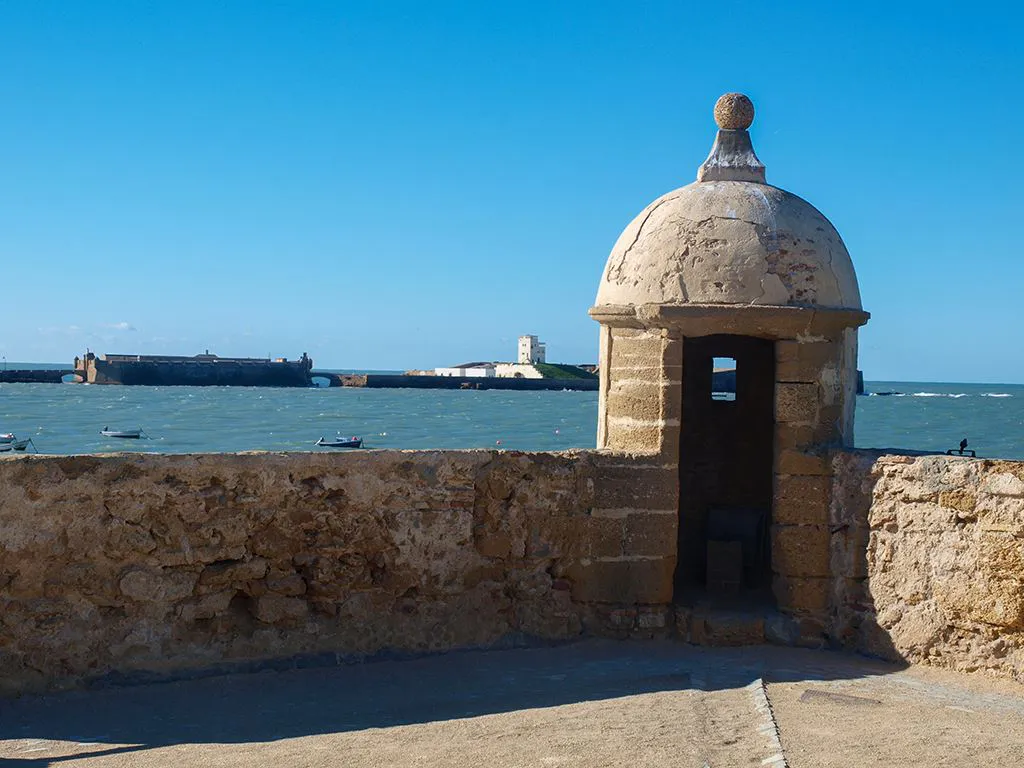
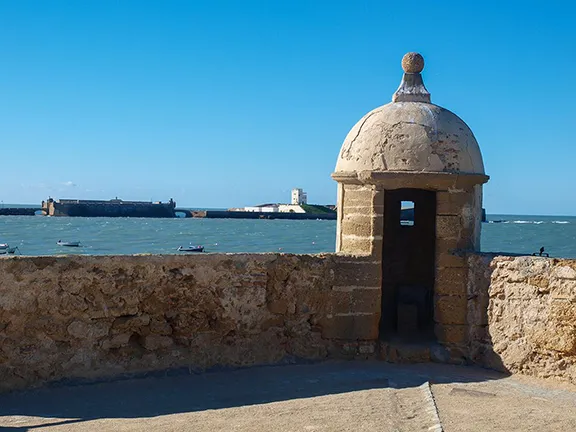
Santa Catalina, approaches to Cadiz
Modern research indicates that Cádiz was founded on an island just off the western coast of Spain by Phoenicians from Tyre about 1104 BC. They called it Gadir or Agadir. The port was established sometime later in the 7th century BC and was to enable the Phoenicians to trade with the Tartessians who occupied the mainland.
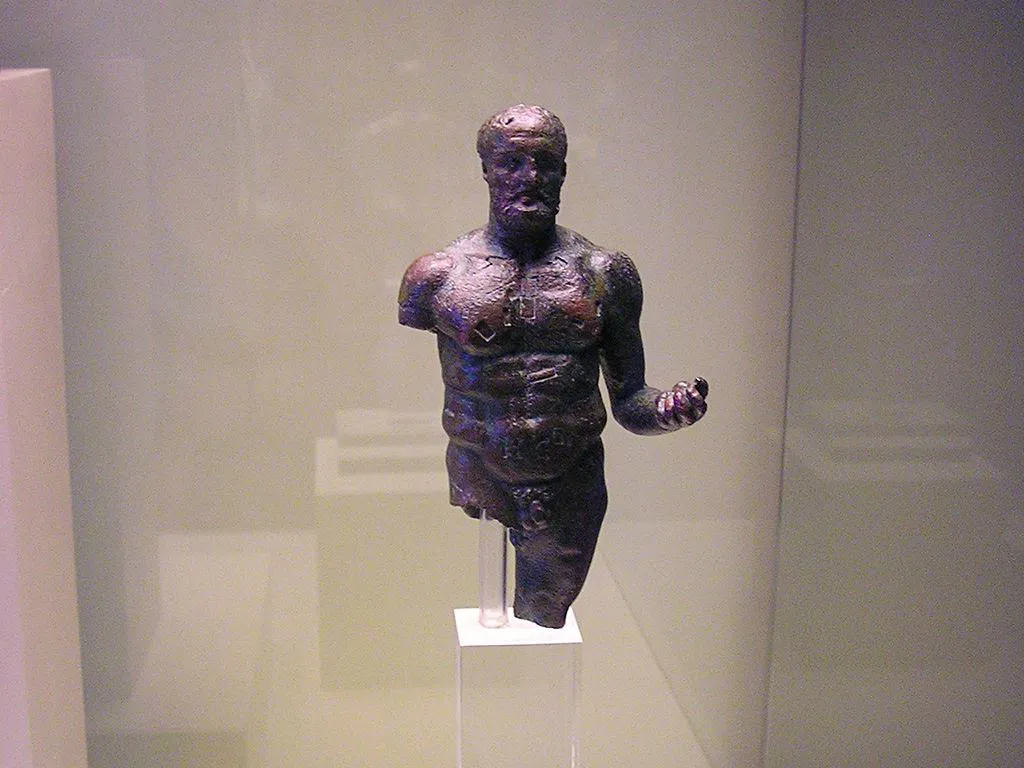
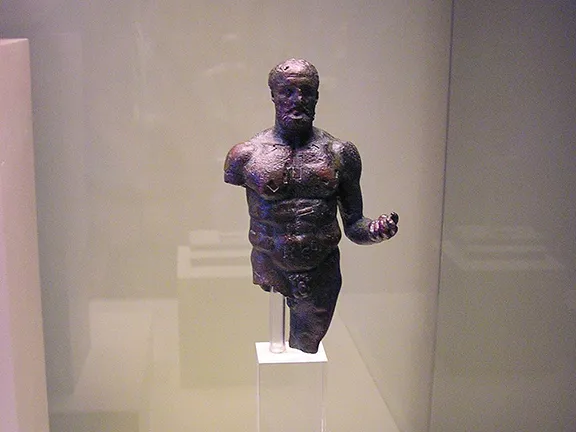
Hercules
In Greek mythology, Hercules was sometimes credited with founding Gadeira (Gadir) after performing his tenth labour, the slaying of Geryon, a monster with three heads and torsos joined to a single pair of legs. A tumulus near the city was traditionally associated with the final resting place of Geryon.
All myths aside, the Phoenicians did build a temple to house an oracle at the south end of the island, the Temple of Melqart. Melqart was known to the Greeks as ‘Tyrian Hercules’ and to the Romans as ‘ Hercules Gaditanus. They referred to the temple as the ‘Heracleum’. The Heracleum was supposedly fabulously wealthy, the repository of offerings from grateful sailors that had withstood the dangers of passing through the Gibraltar Strait, and from sailors about to make the return journey. According to Roman mythology, during his journey, Hercules had to cross the Atlas Mountains. Rather than climb them, Hercules stamped his foot creating the Straits and a channel between the Mediterranean Sea and the Atlantic Ocean. Some historians believe that the columns of the Temple of Melqart were the origin of the myth of the ‘Pillars of Hercules’. According to the Life of Apollonius of Tyana, the ‘Heracleum’ was still standing during the 1st century AD.
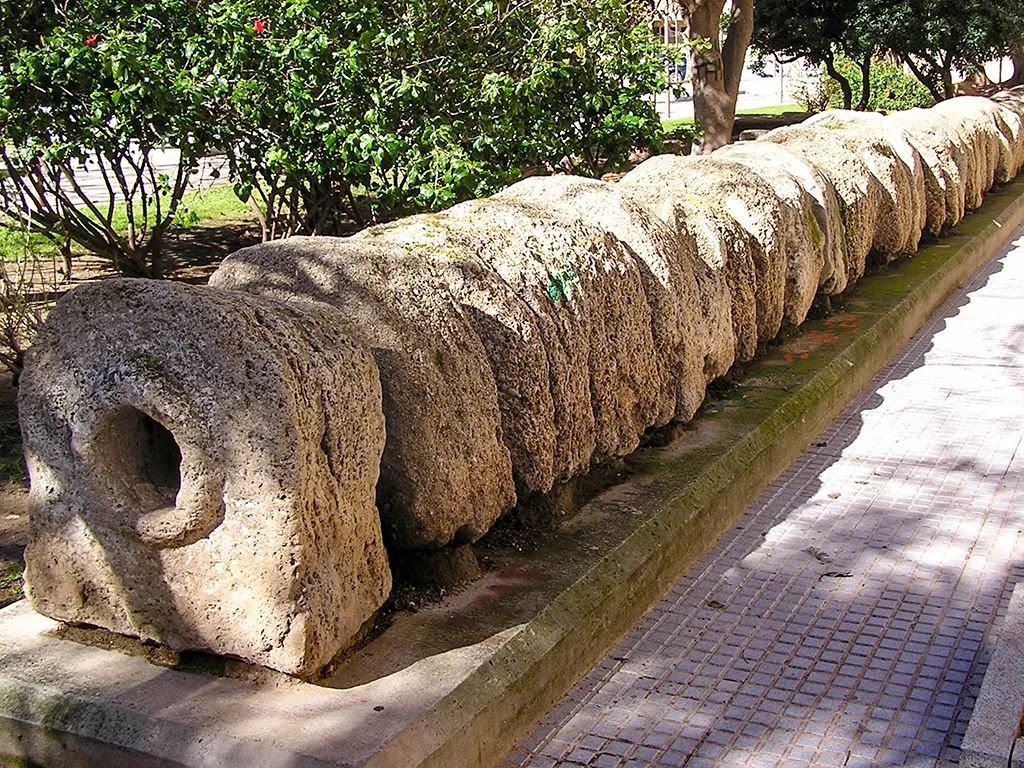
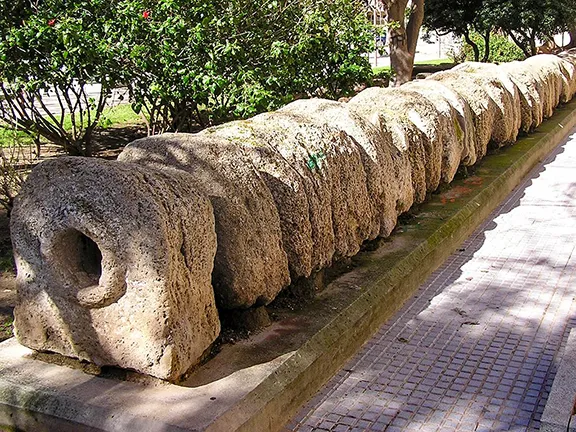
Phoenician aqueduct
Following the First Punic War (264 – 241BC), Cádiz became the headquarters from which Hannibal launched his conquest of southern Iberia. He is said to have made a sacrifice at the Temple of Melqart before setting off to invade Italy with his 37 African battle elephants via the Alps in 218 BC.
A street, Calle Amilcar Barca, in Cádiz commemorates the Barca family and Hamilcar in particular.
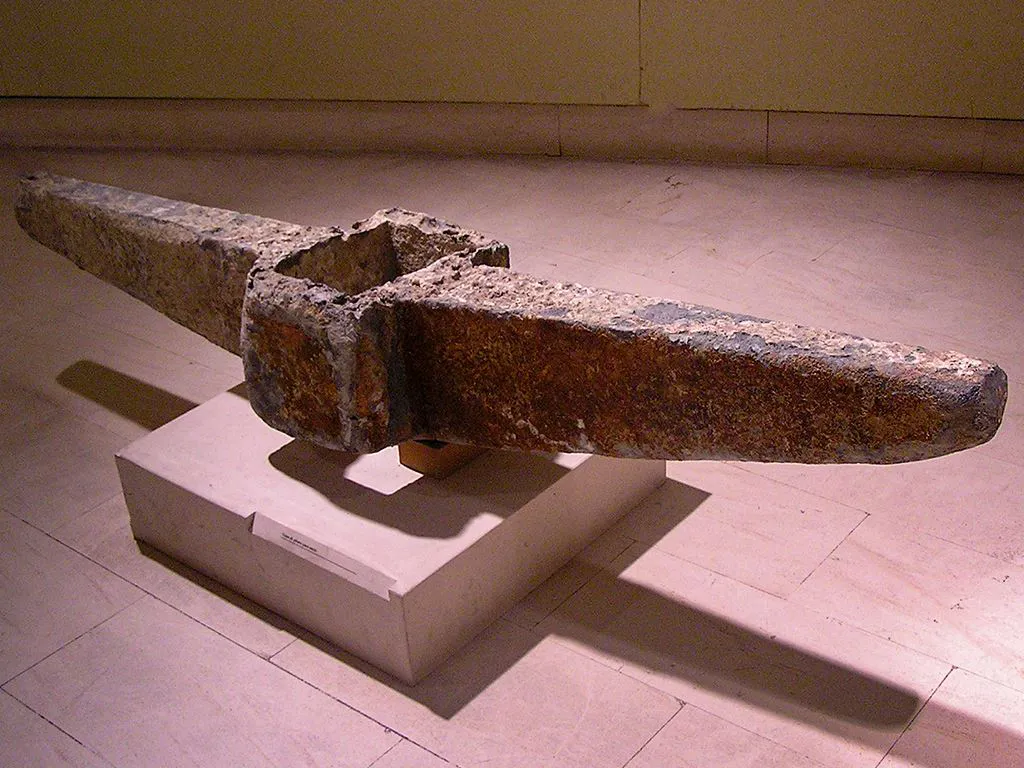
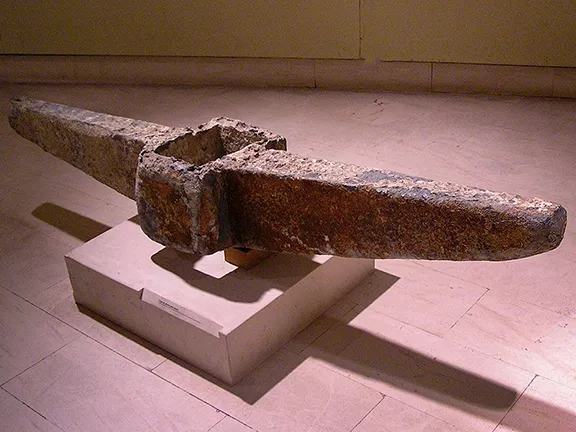
Roman anchor
Cádiz fell to the Romans led by Scipio Africanus in 206 BC and the city became known as Gadir. Throughout the Republic and Empire periods, Gades flourished as a port and naval base. The Roman historian, Gaius Suetonius Tranquillus, commonly referred to as Suetonius, records a visit by Julius Caesar to Gades when Julius was but a junior senator. The ever-ambitious Caesar is said to have wept over a statue of Alexander the Great, lamenting, that, although the same age, he (Caesar) had still not achieved anything memorable.
Throughout the Roman period, Cádiz remained loyal to Rome and, in 49 BC, Julius Caesar, by now dictator of Rome, bestowed Roman citizenship on all its inhabitants. Shortly after Caesar’s assassination in 44 BC, Augustus came to power. He was, by all accounts, fond of surveys and censuses. In one of his fact finding forays it was recorded that Gades was home to 500 equites or nobles, a concentration rivalled only by Rome itself and Patavium (Padua). Most equites maintained estates on the mainland and gained a reputation for licentious behaviour at innumerable bacchanalian parties. Gaditan dancing girls became famous throughout the ancient world.
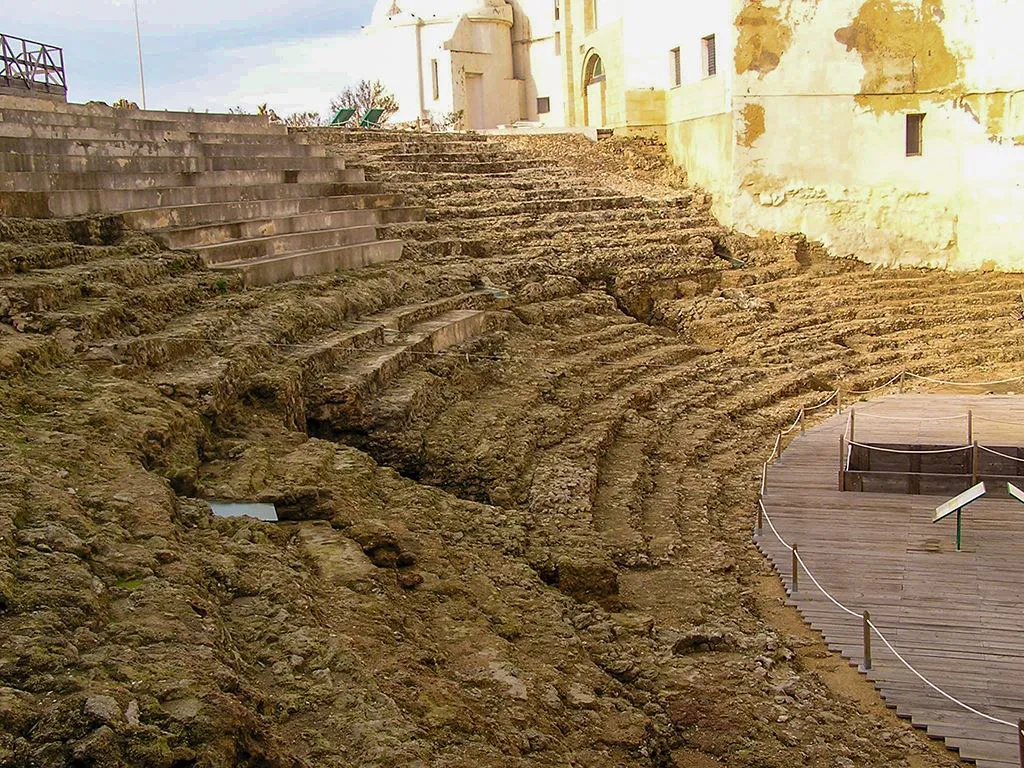
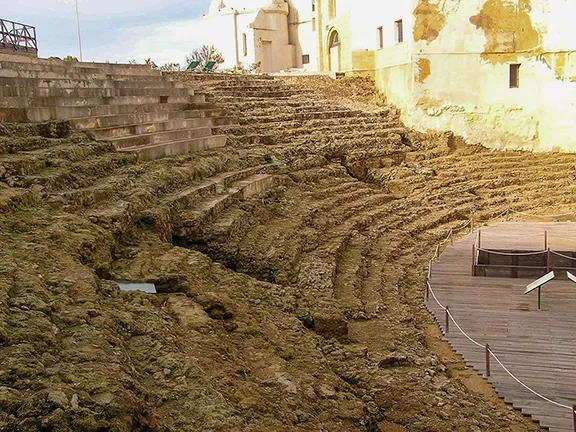
Roman theatre Cadiz
Roman power in Hispania Baetica declined in the 5th century AD and they were supplanted by the Visigoths. The original city of Gadir was destroyed. There are few remains of Roman Gades. A notable exception being the unearthed theatre.
The Byzantine Romans under Justinian, briefly took the city between 551 and 572 AD and incorporated it into their Iberian possessions called Spania.
Leovigild retook the city in 572 and it remained in Visgothic hands until the Muslims arrived in 711 AD.
Cádiz, or Quadis as it was known then, was occupied by the Muslims between 711 AD and 1262 AD. It was conquered by Alphonso X of Castile 200 years before the final reconquest of Granada in 1492.
There is little evidence of the Muslim period apart from a couple of references in contemporary historical texts including a legend concerning an idol, over 100 cubits tall on the outskirts of Cádiz. In all likelihood, the ‘idol’ was a navigational aid so the story that grew around it, that the idol’s ‘magic’ could block the Gibraltar Straits with contrary winds and currents is not unreasonable. The idol was supposedly of solid gold.
Such a prize did not escape the notice of Admiral Ali ibn-Isa ibn-Maymun who, in need of funds to finance a revolt, destroyed the idol about 1145 AD. He was disappointed to find that the statue, although glittering like gold, was in fact made of bronze. He apparently reduced it to coinage in any case.
The only other reference of note is in the De itinere frisonum, an eyewitness account of the Frisian crusades to Acre. In 1217, a group of Frisian crusaders, en-route to the Holy Land, stopped off at Qadis, burnt the city and destroyed the mosque.
Cádiz, with its easy access to the Atlantic, became the home port for the Spanish treasure fleets returning from the Americas. Christopher Columbus used Cádiz to victual his vessels prior to his second and fourth voyages. The city became a target for all its enemies, including the Barbary pirates. A series of raids led to a large part of the city being consumed by fire in 1569.
In 1587, a raid by Francis Drake occupied the harbour for three days, captured six ships, and destroyed 31 others (an event which became known in England as 'The Singeing of the King of Spain's Beard'). There was a more serious purpose to the raid in that it delayed the Spanish Armada by at least a year.
An English raid that was solely motivated by potential profit occurred in 1596. The city was captured by a combined Anglo-Dutch fleet commanded by the Earls of Essex and Nottingham. 32 Spanish ships were destroyed, and the city was captured, looted and occupied for almost a month. Finally, when the royal authorities refused to pay a ransom demanded by the English for returning the city intact, they burned much of it before leaving with their booty.
A third English raid was mounted against the city in 1625 by George Villiers, 1st Duke of Buckingham, and Edward Cecil, but the attempt was unsuccessful.
During the Anglo-Spanish War (1654 – 1660), Admiral Robert Blake blockaded Cádiz from 1655 to 1657.
In the 1702 Battle of Cádiz, the English attacked again under George Rooke and James Butler, 2nd Duke of Ormonde, but they were repelled after a costly siege.
During the 18th century, Cádiz received another boost. Since the discovery of the Americas, the administration of the Spanish Empire had been done from Seville. However, the Rio Guadalquivir was silting up, making it more difficult for ships to navigate the river as far as Seville. Cádiz became the administrative centre for the colonies. Cádiz became one of Spain's greatest and most cosmopolitan cities and home to trading communities from many countries, including the Irish who's influence is still very evident in the city.
The British returned to Cádiz during the French Revolutionary Wars and blockaded the port between 1797 and 1802. They returned the following year, 1803, at the start of the Napoleonic Wars and stayed until 1808 when the Peninsula War (also known as the Spanish War of Succession) saw Spain allied with Britain. Cádiz was one of the few Spanish cities to hold out against the invading French and their candidate for the Spanish throne, Joseph Bonaparte. Cádiz then became the seat of Spain's military high command and Cortes (parliament) for the duration of the war. It was here that the liberal Spanish Constitution of 1812 was proclaimed.
The revolution of 1820 brought into power the “jailbirds”—liberals of the 1812 vintage who had been persecuted by Ferdinand VII. The constitution of 1812 was re-established together with other liberal legislation. The revolutionaries imprisoned Ferdinand VII in Cádiz. It was a French force, following the Battle of Trocadero in 1823, that eventually secured Ferdinand’s release and a return to the absolute monarchy.
In 1868, Cádiz was once again the seat of a revolution, resulting in the eventual abdication and exile of Queen Isabella II. The Cortes of Cádiz decided to reinstate the monarchy under King Amadeo just two years later.
The 20th century saw a gradual increase in population and economic activity, particularly in its shipyard. However, on the 18th August 1947, a huge amount of munitions, mines, torpedoes and depth charges, exploded in a storage depot causing widespread damage, enough to cause the closure of the dockyards. The dockyard was the largest single employer, and many families were left with no income.
The situation was so dire following the destruction of the dockyard, that Franco decided to permit the return of ‘Carnival’, presumably to encourage the poverty stricken Gaditanas, to cheer up. They were not allowed to use the word ‘Carnival’, the event was reintroduced with the name, "Fiestas Típicas Gaditanas", and allowed the population to compose their famous coplas, albeit under strict censorship.